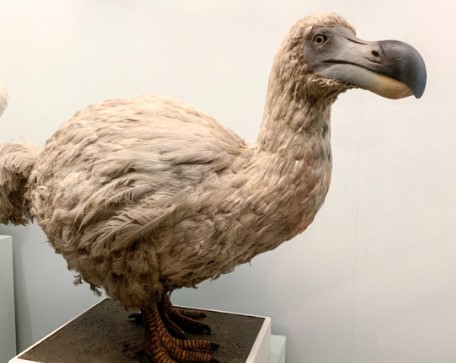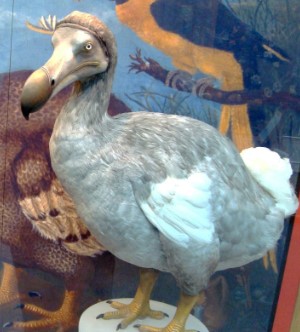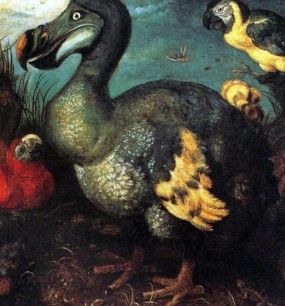





The dodo is an extinct flightless bird living on the island of Mauritius. This island was east of Madagascar, an island right near Africa. Its habitat is believed to have been the woods in the drier coastal areas of Mauritius. The birds were first seen by Portuguese sailors who killed them all for their meat.
The dodo weighed about 23 kg. It had blue-gray plumage, a big head, a 23 cm blackish bill with a reddish sheath forming the hooked tip, small useless wings, stout yellow legs, and a tuft of curly feathers on its rear end. It used gizzard stones to help digest its food which scientists thought might have been fruit. The legs were robust to support the bulk of the bird and made it agile and maneuverable in the dense, pre-human landscape.
The closest living relative of the dodo is the Nicobar pigeon. It also had an extinct relative called Rodrigues solitaire (Pezophaps solitaria) who lived on the island of Rodrigues which was also east of Madagascar. The dodo ate fruit that mostly fell from trees but also ate nuts, seeds, bulbs, and roots. Also, some suggest that the dodo might have eaten crabs and shellfish. The dodo may have used its small wings for display and balance. It also may have used its large beak for territorial disputes. The dodo probably laid a single egg in the nest and probably laid on it to keep it warm.
The dodo went extinct due to human activities. Dutch and Portuguese sailors came onto the island and killed the dodos for their meat. They brought invasive species like cats and rodents which stole the eggs of this bird. The forest that which the dodos lived was also cut down to make way for human settlements. After some time, the dodo went extinct.